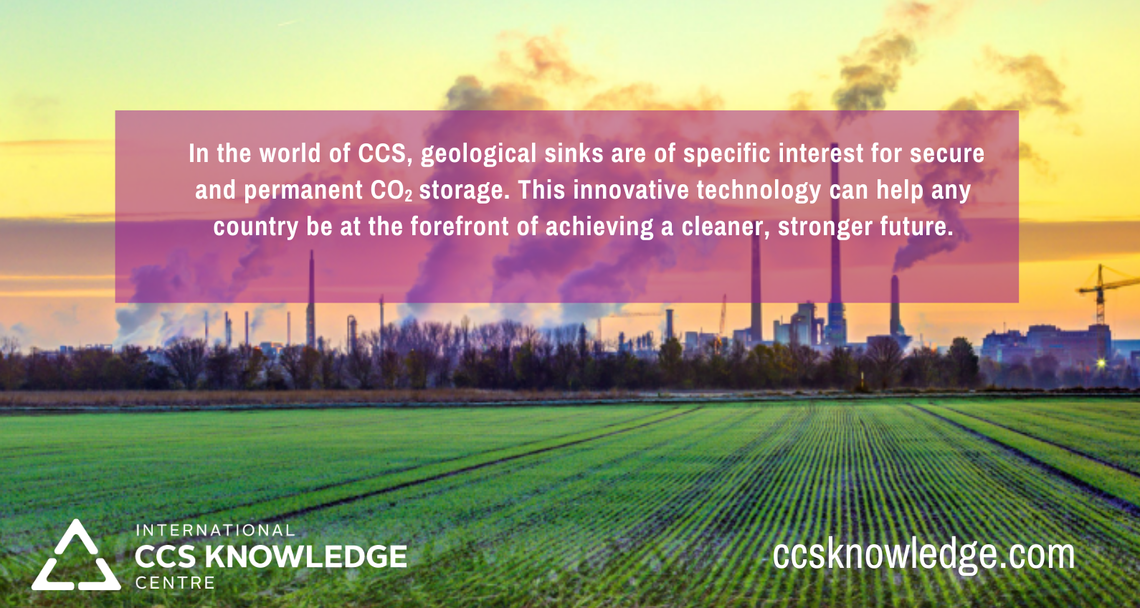The impact of anthropogenic greenhouse gas (GHG) emissions and the sources of those emissions is a hot topic among environmental think tanks and NGOs, governments, industry, and communities as the world looks at building a climate action strategy. In April 2021, the International CCS Knowledge Centre (the Knowledge Centre) published a report titled “Canada’s CO2 Landscape: A guided map for sources and sinks”, which looked at Canada’s large point sources and the location of “sinks” that will absorb the carbon dioxide (CO2) or put it back into the ground. As any nation looks to reduce its emissions, understanding the connection between its sources and sinks is a vital combination for the application of carbon, capture, usage, removals and storage (CCUS/CCS).
What are Canada’s Emissions Sources
Today, GHG emissions are approximately the same level they were in 2005 and are projected to climb at an annual rate of 815Mt by 2030 . The oil and gas, and transportation sectors account for a quarter of the country’s total emissions with 377 million tonnes (Mt) of CO2 being emitted directly into the atmosphere each year. Buildings, heavy industry, agriculture, and electricity emissions were all under 100Mt, seeing emissions as 91Mt, 77Mt, 73Mt, and 61Mt respectively.
Breakdown of Canada’s GHG Emissions by Economic Sector, 2019

In its report, the Knowledge Centre focused on the importance of aligning any large CO2 sources that could apply CCUS, with large reservoirs for permanent storage if Canada is to meet its Nationally Determined Contribution commitments under the Paris Agreement of 40-45 per cent below 2005 levels by 2030, and 2050 net-zero ambitions.
Are Sources near Sinks?
Mapping CO2 sources and sinks is at the core of any large-scale CCS project, as deployment depends on the proximity of potential reservoirs. As Canada, and the world, focus on the deep emission cuts necessary to achieve such targets, many are turning to the exponential benefits of gathering industry (i.e., emitters) through shared infrastructure and supporting CCS Hubs. The Knowledge Centre, working with Navius Research, and referencing the Boston Consulting Group, mapped large point source emitters across Canada, atop the known storage reservoirs.
Building off Canada’s well known geological formations, the report points to sinks that offer secure and permanent CO2 storage – which are predominantly located in Western Canada’s Alberta and Williston basins, providing 390 gigatonnes (Gt) of storage potential. It also points to potential storage opportunities, while yet unproven, off the west cost of Vancouver Island, in southern Ontario, and Atlantic Canada.
Canada’s Carbon Capture & Storage Potential

Pages 6 and 7 of the report highlight Canada’s history in utilizing CO2 for enhanced oil recovery (EOR), which has been proven to permanently sequester CO2 in depleted oil reservoirs. The Knowledge Centre does however point to several active storage projects already sequestering millions of tonnes of CO2 in Western Canada, with ‘tonnes’ of storage still likely available in the Basal Saline System.
Negative Emissions with Capture and Sinks
The report adds that, while Canada has an abundance of storage opportunities, it also has formidable land mass with forests, marsh and wetlands, farmland, and other natural CO2 sinks. Negative emission technologies such as bioenergy with CCS (referred to as BECCS) are also highlighted as a key factor to consider when mapping sources and sinks.
With insight from Dr. David Maenz, the report indicates that Canada is rich in the resources required for successful implementation of BECCS. It surmises that, if fossil fuel driven industries like coal-fired power plants in Alberta, Saskatchewan and Atlantic Canada, and iron and steel mills in Southern Ontario, as well as cement facilities were to fuel switch to biomass with CCS, the emissions abatement potential could be approximately 70Mt/year of CO2 avoided.
The report also notes that actual implementation of BECCS will likely be constrained by access to geological storage and biomass supply, and that optimal implementation would be dependent on establishing ideally located hubs/clusters. Additionally, with carbon prices over $65 USD, the value of the carbon removal potential of one tonne of biomass exceeds the energy value of a barrel of oil.
Sources and Sinks and Net Zero Ambitions
The Knowledge Centre underscores that understanding sources and access to sinks is essential and arriving at net-zero emissions in under 30 years is a lofty ambition which requires all innovative technologies to ramp up. Government regulations and incentive programs can aid in the advancement of CCUS and attempt to correct market barriers to uptake. Such measures are progressing quickly in Canada such as the Canadian carbon pricing system, Strategic Innovation Funding, the Net-Zero Accelerator, Canadian Infrastructure Bank low-interest loans, the Clean Fuel Standard, and the Investment Tax Credit; as well as Alberta’s Technology Innovation and Emissions Reduction (TIER) regulation and Storage Tenure Management. These types of levers are expected to spur many projects with far ranging economic and environmental benefits.
As Canada’s climate change landscape changes, the Knowledge Centre can help next generation projects understand what steps to take. One of its key pillars is helping industry get to net-zero by not starting at ground-zero. By building off the knowledge and lessons learned of operating facilities like the Boundary Dam CCS project, we will see greater success in deploying shovel worthy CCS projects into the future.
You can find more information about the International CCS Knowledge Centre at:
https://ccsknowledge.com/initiatives/incentivizing-large-scale-ccs.
iGovernment of Canada. “Canada advanced climate action and remains committed to ambitious global action as United Nations Climate Change Conference concludes” (December 16, 2019) https://www.canada.ca/en/environment-climate-change/news/2019/12/canada-advanced-climate-action-and-remains-committed-to-ambitious-global-action-as-united-nations-climate-change-conference-concludes.html
iiGovernment of Canada. “National Inventory Report 1990 –2018: Greenhouse Gas Sources and
Sinks In Canada” (2020) https://publications.gc.ca/collections/collection_2020/eccc/En81-4-2018-1-eng.pdf
iiiGovernment of Canada. “National Inventory Report 1990 –2018: Greenhouse Gas Sources and
Sinks In Canada” (2020) https://publications.gc.ca/collections/collection_2020/eccc/En81-4-2018-1-eng.pdf
ivBoston Consulting Group, “Think Small to Unlock Carbon Capture’s Big Potential” (September 21,
2020), https://www.bcg.com/publications/2020/unlocking-carbon-captures-potential
